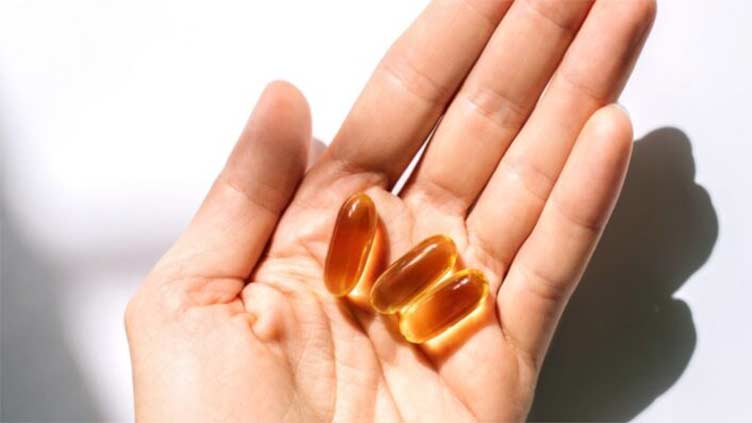Melanoma: Vitamin D supplements linked to reduced skin cancer risk

Melanoma: Vitamin D supplements linked to reduced skin cancer risk
ISLAMABAD, (Online) - The cross-sectional study was a collaboration between the University of Eastern Finland and Kuopio University Hospital.
The research involved 498 Finnish adults determined by dermatologists to be at high risk of skin cancer, such as melanoma, as well as squamous cell carcinoma and basal cell carcinoma.
According to researchers, people who took vitamin D regularly were less likely to have had melanoma in the past or currently and were deemed by dermatologists to be less likely to develop melanoma in the future.
The study was recently published in Melanoma Research.
Linking vitamin D supplementation and melanoma risk
Study participants ranged in age from 21 to 79 years old, including 253 males and 245 females. Participants were divided into three groups based on their intake of vitamin D supplements: non-use, occasional use, or regular use.
The researchers were also interested in finding out whether regular use of vitamin D supplements corresponded to higher blood levels of vitamin D, known as serum calcidiol or 25-hydroxy-vitamin D3. This is the “storage form” of vitamin D in the body.
Some researchTrusted Source has linked low serum calcidiol with increased cancer risk, while other research has suggested otherwise. Nonetheless, it is a measure often used to determine a person’s vitamin D levels.
After testing serum calcidiol levels in 260 participants, researchers found that regular vitamin D supplementation corresponded with the highest levels of serum calcidiol and non-supplementation with the lowest levels.
Vitamin D, calcidiol, and cancer
Lead study author Dr. Ilkka T. Harvima, professor of dermatology and venereology at the University of Eastern Finland, told Medical News Today, “The issue of vitamin D in the context of skin cancers is interesting, though quite controversial.”
Dr. Arup K. Indra, pharmacy professor at Oregon State University, not involved in the study, suggested that vitamin D may protect against oxidative stress and DNA damage, which are associated with cancer risk.
“[Vitamin D] can also be involved in immune modulation, specifically in directing Treg [regulatory T cells] and Th2 cells in immune surveillance,” Dr. Indra told MNT.
Dr. Kim Margolin, FACP, advanced oncology physician at Saint John’s Cancer Institute in Santa Monica, not involved in the study, told MNT:
“It’s almost impossible for me to believe that a single nutrient could have a statistically significant and clinically significant impact on the development of a disease that requires so many different inputs.”
In addition, not all experts agree that calcidiol is an effective indicator of vitamin D levels in the body.
“Human skin itself expresses [the enzyme] CYP27A1 that produces calcidiol from vitamin D, and CYP27B1 that produces biologically very active calcitriol from calcidiol,” Dr. Harvima explained, noting that enzyme expression determines the level of vitamin D and its metabolites in the body.
Vitamin D supplements: An alternative to sun exposure
It has been clear for some time that exposure to ultraviolet (UV) radiation from the sun, and in particular getting sunburned, is a risk factor for skin cancers.
Dr. Margolin explained that UV radiation is the primary cause of basal cell and squamous cell cancers and one of the major risk factors in melanoma.
“Since natural vitamin D is produced by the skin in response to sunlight, reducing UV exposure to avoid cancer reduces the amount of naturally produced vitamin D in the body, potentially leading to a need for supplementation.”
– Kim Margolin, M.D., FACP, advanced oncology physician
According to Dr. Margolin, a person’s vitamin D status may depend on factors other than UV exposure. These include:
• age
• body mass index (BMI)Trusted Source
• skin prototype
• pregnancy
• nursing
• air pollutants
• dietary intake
• smoking
• some genes of skin pigmentation
Dr. Margolin noted that while the kind of vitamin D you can get from supplements is “pretty good,” it’s not exactly the same as naturally produced vitamin D. Even so, she considers vitamin D supplementation as a helpful alternative to sun exposure.
“The mutagenic effect of going in the sun probably far outweighs the beneficial effect that it may have by getting you the right kind of vitamin D in your blood,” Dr. Margolin said.
How much vitamin D do you need?
It’s too early to determine whether vitamin D supplementation could reduce melanoma risk in the general population, and more research is still needed.
“Vitamin D supplementation alone is unlikely an effective medication to treat metastatic melanoma,” Dr. Harvima said.
“This is important to note because there may be individuals in populations who might erroneously think so and then end up neglecting effective treatment,” Dr. Harvima added.
Still, many people may benefit from taking vitamin D supplements. Dr. Harvima recommended following your country’s national guidelines for daily vitamin D intake.
“In countries with short daylight in winter, like in Finland,” one might consider a higher dose of vitamin D, perhaps some 20–50 micrograms a day,” Dr. Harvima said.
In the United States, the current daily recommendationsTrusted Source for vitamin D include:
• birth to 12 months: 10 micrograms (400 international units)
• children 1–13 years: 15 mcg (600 IU)
• teens 14–18 years: 15 mcg (600 IU)
• adults 19–70 years: 15 mcg (600 IU)
• adults 71 years and older: 20 mcg (800 IU)
• pregnant and nursing people: 15 mcg (600 IU)
It’s also a good idea to consult your physician before taking supplements of any kind, especially since they are regulated by the Food & Drug AdministrationTrusted Source as food, not drugs.
The agency statesTrusted Source the law “does not require the manufacturer or seller [of an herbal or dietary supplement] to prove to FDA’s satisfaction that the claim is accurate or truthful before it appears on the product.”


